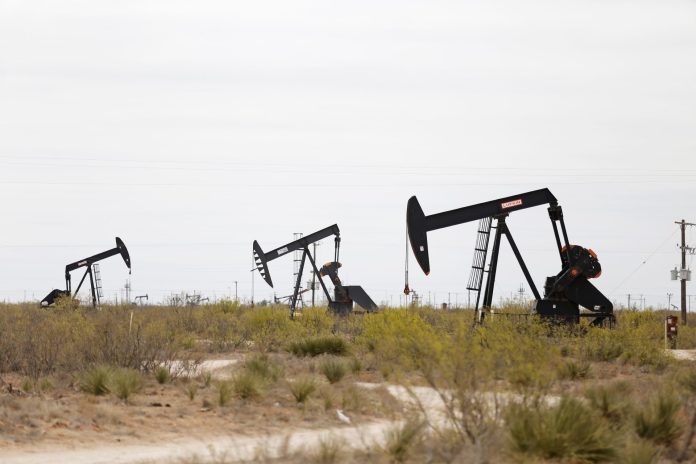
The construction or expansion of new liquefied natural gas export terminals on the Texas and Louisiana Gulf Coasts has energy experts hoping those very expensive plants will transform the American LNG industry into one that relieves the domestic oversupply of natural gas and pushes the price into long-term profitability.
“The new LNG terminals along with announced projects in Canada and Mexico are crucial to the U.S. natural gas effort’s being viable into the future.” Odessa oilman Kirk Edwards said. “As the world is weaning itself from bad actors such as Russia and the Middle East, our U.S.-supplied natural gas will be the product of choice.
“The only problem is having enough facilities that can liquify the gas and get it onto ships to send overseas. Luckily the investments are being made by many different players and those projects seem to be underway.”
Edwards said one such project is in Sabine Pass, Texas, where 30,000 workers are being employed at a cost of almost $8 billion.
“That is only one of the many terminals being built right now,” he said. “These are major investments and it takes huge companies to make them work.”
Among the American LNG plants being built or expanded are QatarEnergy-ExxonMobil Corp.’s projected 2.4-billion cubic feet per day Sabine Pass venture, Venture Global’s 2.9-bcfd at Plaquemine, La., Cheniere Energy’s 1.5-bcfd Corpus Christi LNG expansion and Sempra’s $13-billion Port Arthur terminal.
“Texas is a leading energy hub thanks to the abundant energy supplies and responsible oil and gas producers who are working hard to meet not only a rise in American demand but global demand as well,” said Texas Independent Producers & Royalty Owners President Ed Longanecker. “New LNG projects coming online mean a continued investment in the state, people and communities that make abundant, affordable energy possible.
“With a growing population and rising prosperity, global energy demand is expected to continue to rise,” Longanecker said from Austin. “Oil and gas producers in Texas are ready to meet that demand and will continue to support policies that allow the buildout of necessary infrastructure.”
He said 34 percent of American LNG exports went to Europe during the first half of 2021 and that rose to 74 percent in the first half of last year as the European supply of Russian gas dropped by 40 percent.
“In June 2021 the top two destinations for U.S. LNG exports were South Korea and China respectively,” Longanecker said. “In June 2022 the top two destinations were France and the Netherlands.”
He said 90.1 million tons of LNG moved through the Port of Corpus Christi in the first half of last year.
Perryman said the market has seen substantial growth since the U.S. began exporting LNG less than a decade ago.
“Texas and the Gulf Coast play a crucial role in the market,” the Waco economist said. “For the 12 months ended in June 2023 U.S. LNG exports totaled over 3.9 trillion cubic feet. Of that amount about one fourth was produced in Texas with 743.8 billion cubic feet in Corpus Christi and another 231.1 Bcf in Freeport, which was only in operation for five months. Two Louisiana facilities in Sabine Pass and Cameron accounted for another 66 percent of US exports.
“Our firm has done the economic analyses to support most of the permits for facilities in the U.S. and Canada including the ones above.”
Perryman said building an LNG export terminal is not only very expensive, it’s time-consuming “with years involved in permitting through the final investment decisions even before dirt begins to move.
“Companies generally want to have commitments to sell most of their capacity before moving forward given the extremely high construction costs,” he said. “Several facilities are currently under construction including the expansion of some already in operation.
“ExxonMobil’s Golden Pass project near Sabine Pass is underway and Sempra-ConocoPhillips’ Port Arthur LNG for $13 billion and Freeport LNG’s expansion are moving forward. In the Corpus Christi area Cheniere’s next phase of expansion is ongoing.
“Another area with significant activity is Brownsville where NextDecade’s Rio Grande LNG, an $18-billion investment, and Glenfarne’s Texas LNG Brownsville for another $4 billion appear likely to move ahead. We did the analyses on most of these.”
Perryman said the market’s continued development has the practical effect of converting natural gas from a national market defined by pipeline infrastructure to a global market, thus helping to ensure that people worldwide have adequate power and heat notwithstanding the actions of Russia and other such nations.
“The geopolitical implications are therefore highly significant,” he said. “In addition natural gas is clean-burning compared to existing alternatives such as the coal used in much of the developing world. It has a definitive role in ensuring an affordable and reliable supply of power to support economic growth and human well-being as the world addresses climate issues.
“Permian Basin production will be a substantial part of the LNG supply. Although prices will vary as the market develops, long-term demand throughout the world will assure sustainability and future investment.”



